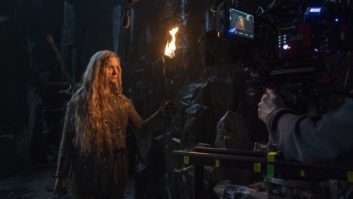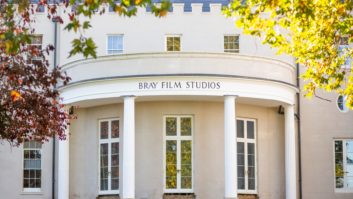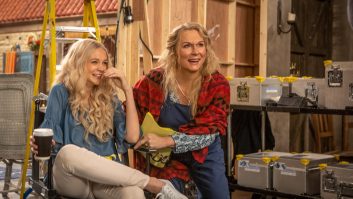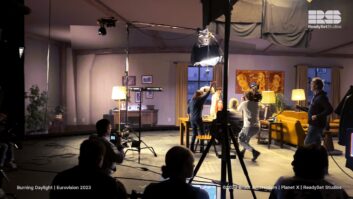Re-recording mixer Michael Minkler has been fortunate enough to mix some highly successful films over the years, from the musicality of Dreamgirls and Chicago to the grittiness of Black Hawk Down and Django Unchained.
Minkler was familiar with Mamma Mia! due to his work on the first film with the same production company. The main focus here was once again the music, which was recorded and produced by ABBA’s Benny Andersson and his sound engineer Bernard Löhr.
“They worked for quite a long time in their own studio back in Stockholm and they both came out to LA for the mix,” Minkler tells TVBEurope. “Bernard was with us from day one and Benny came out on a couple of occasions for a week at a time. We worked out of Universal and the majority of it was mixed there, including the final mixes, but we also did some work up at Fortune Audio, because it was a favourite place of our producer Gary Goetzman.”
Minkler says the main objective was to make sure they honoured the music really well. It was recorded in 5.1, and the film was mixed in 5.1, 7.1 and Dolby Atmos: “With Benny’s approval and Bernard’s help we did the best we could with these phenomenal new recordings of these wonderful older songs,” Minkler explains. “We spent quite a long time on it but the studio gave us anything we wanted, and it took about 12 weeks before we reached the pre-mixing process and the final mix.”
The dialogue work, which included a lot of ADR that was done for the sake of jokes, clarity, timing, accents etc, was very carefully done. Minkler and the sound team were granted an abundance of time and resources in order to improve the audio, so lots of attention to detail ended up going into the mix.
“It was a process of doing minor tweaks along the way that resulted in a fantastic movie,” says Minkler. “They really nailed it.”
Minkler’s approach to sound design remains consistent: “I will of course focus on one particular element depending on the movie, but my approach is always the same,” he says. “Having the time and freedom to do the job properly is important, and I appreciated that with this particular film.
“It’s full of comedy, romance, fun and a lot of heart. Benny allowed the entire team to build on that fun. It’s not just one person singing a song; there’s lots of people singing it and there’s lots of funniness going on within the performances and the vocals. There’s lots of ad-lib and you can just hear the fun in the singing which is very different from the original recordings.”
Yet on a technical level, Minkler approaches every Dolby Atmos mix differently, because the software and tools are changing so rapidly.
“There’s always new ways of doing everything so it’s always a new experience,” he says. “There’s no real way to approach it up front so you just tackle it as you go along. The Dolby Atmos encoding has now become the standard for all immersive mixing so I think immersive sound is definitely here to stay. In Mamma Mia! it’s relatively subtle; nothing is too overly dramatic with the music and sound effects in Atmos other than the storm sequence. It’s all a matter of how you use it.
“When you have multiple systems running in Pro Tools and all the other ancillary things that exist in the mixing stage, things can go haywire all day long,” he adds. “The more complex the mix, the more users, the more interfaces that are connected – the more dicey it gets. Technology is actually moving too fast to settle down and that’s the challenge.”
“It’s a thoroughly enjoyable film and is so much fun. I truly believe that the audience will have so much fun that they’ll leave and feel depressed,” Minkler laughs. “They’ll want to go back into the cinema and stay on this island, because the people there are just having such a wonderful time.”







